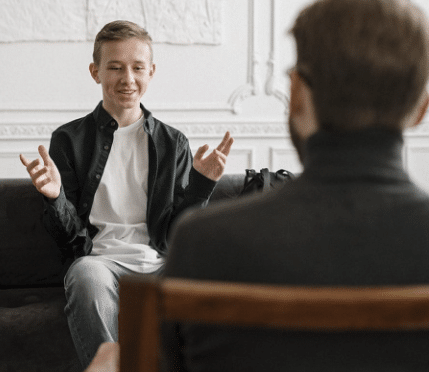First RCT of Rewind Technique shows ‘large effect size’

We had long hoped effectiveness of the rewind technique could be shown through the gold standard testing method of a randomised controlled trial – indeed, the HG Foundation looked into supporting one, but costs were prohibitive – so it is wonderful to announce that the results of a randomised controlled trial (RCT) of the rewind technique, as practised by its founder, Dr David Muss, have recently been published in a medical journal.
The trial found that the rewind, delivered in this case remotely via video, showed “a large effect size in treating symptoms of PTSD” in the participants and suggests that “one to three sessions of rewind demonstrate potential as a more time- and cost-efficient trauma-focused intervention than CBT-TF [trauma-focused cognitive-behavioural therapy] and EMDR [eye movement desensitisation and reprocessing] but with a similar effect size”. [1]
Carrying out a successful RCT like this, which takes a lot of work to get off the ground, is a major step forward in drawing wider attention to the considerable benefits this technique can bring to trauma and phobia sufferers. As many readers will know, human givens therapists have been using the rewind as a key therapeutic tool for over 20 years because of its effectiveness. However, in the version of the technique that HG practitioners are trained in through Human Givens College, there are additional elements included, such as ensuring that the client is in a deeply relaxed state prior to commencing rewind, which we consider therapeutically advantageous and enhances safety.
The rewind technique originated from the visual/kinaesthetic dissociation protocol [2], a technique developed by Richard Bandler, one of the founders of NLP. Dr David Muss developed a variant of this, which he called the rewind technique. [3] The version of the technique that HG practitioners learn was further refined by HG co-founders Joe Griffin and Ivan Tyrrell, who aligned the method with their insights into how trauma and phobias are processed in the brain to increase reliability and safety and minimise risk for trauma or phobias to be embedded further.
Rewind is, as Muss’s study has undoubtedly shown, an extremely effective technique for working effectively with both post-traumatic and phobic responses. However, when working with someone already experiencing significant distress, we recognise that it is essential to ensure that we have the skills to also work with the bigger picture for that individual, which is why the training HG College offers places great emphasis on setting the rewind technique within a wider therapeutic context, teaching students about potential risks, and how to mitigate these, and establishing a clear understanding of when the technique is not suitable to use.
REFERENCES
1. Wright, L A, Kitchiner, N et al (2023). Rewind for posttraumatic stress disorder: a randomized controlled trial. Depression and Anxiety, doi: 10.1155/2023/6279649
2. Bandler, R (1985). Using Your Brain for a Change. Real People Press, Moab, UT.
3. Muss, D (1991). A new technique for treating post-traumatic stress disorder. British Journal of Clinical Psychology, 30,1, 91–2.
Related training - and articles
The Rewind Technique – 2-day in-person workshop
Understanding Trauma – on-demand online course
Trauma: Patterns from the Past – live online training via Zoom
Complex Trauma: how to work effectively with challenging cases – 1-day in-person workshop
Finding Peace at Last – how the rewind technique cured the PTSD I suffered after serious sexual asault


